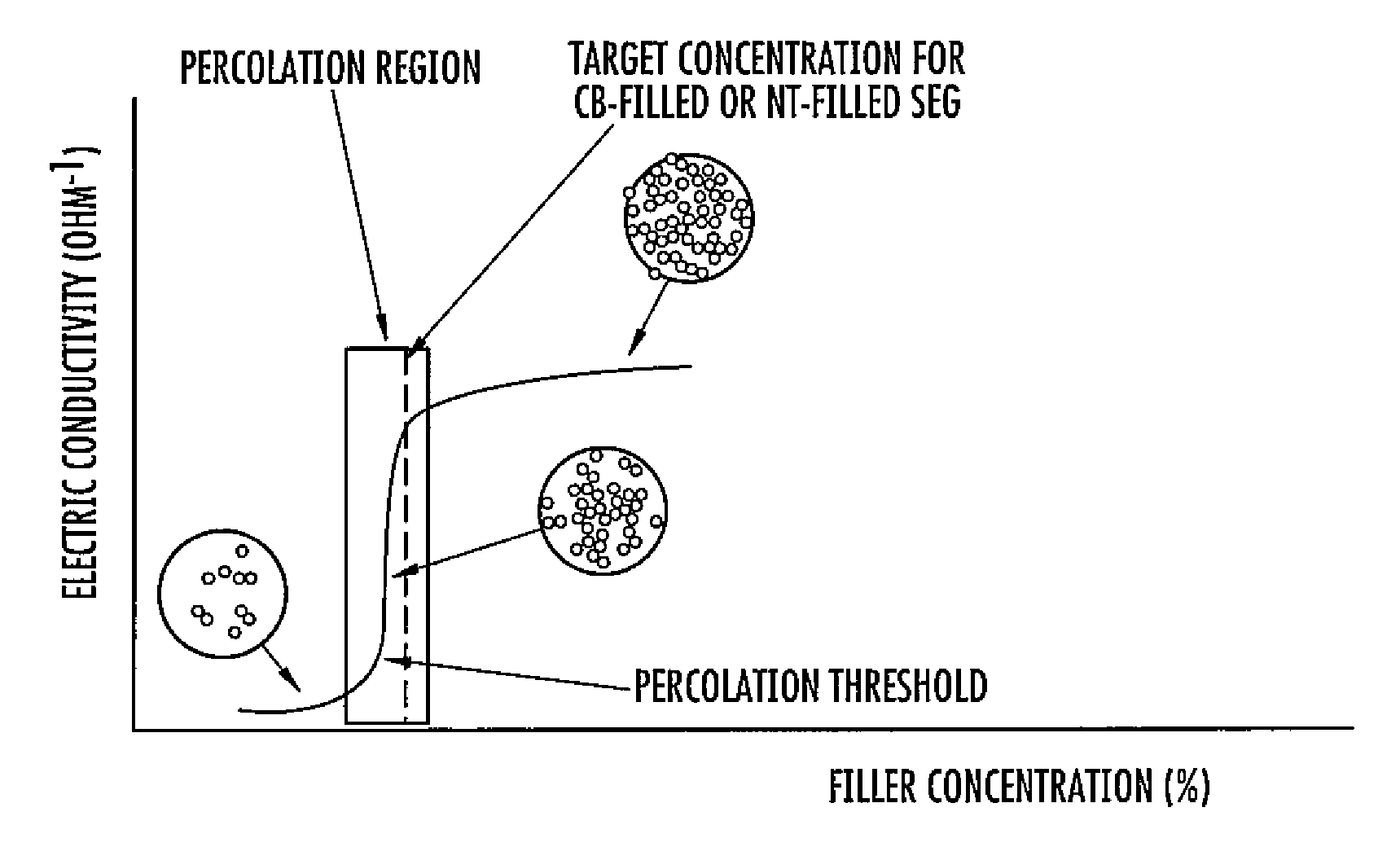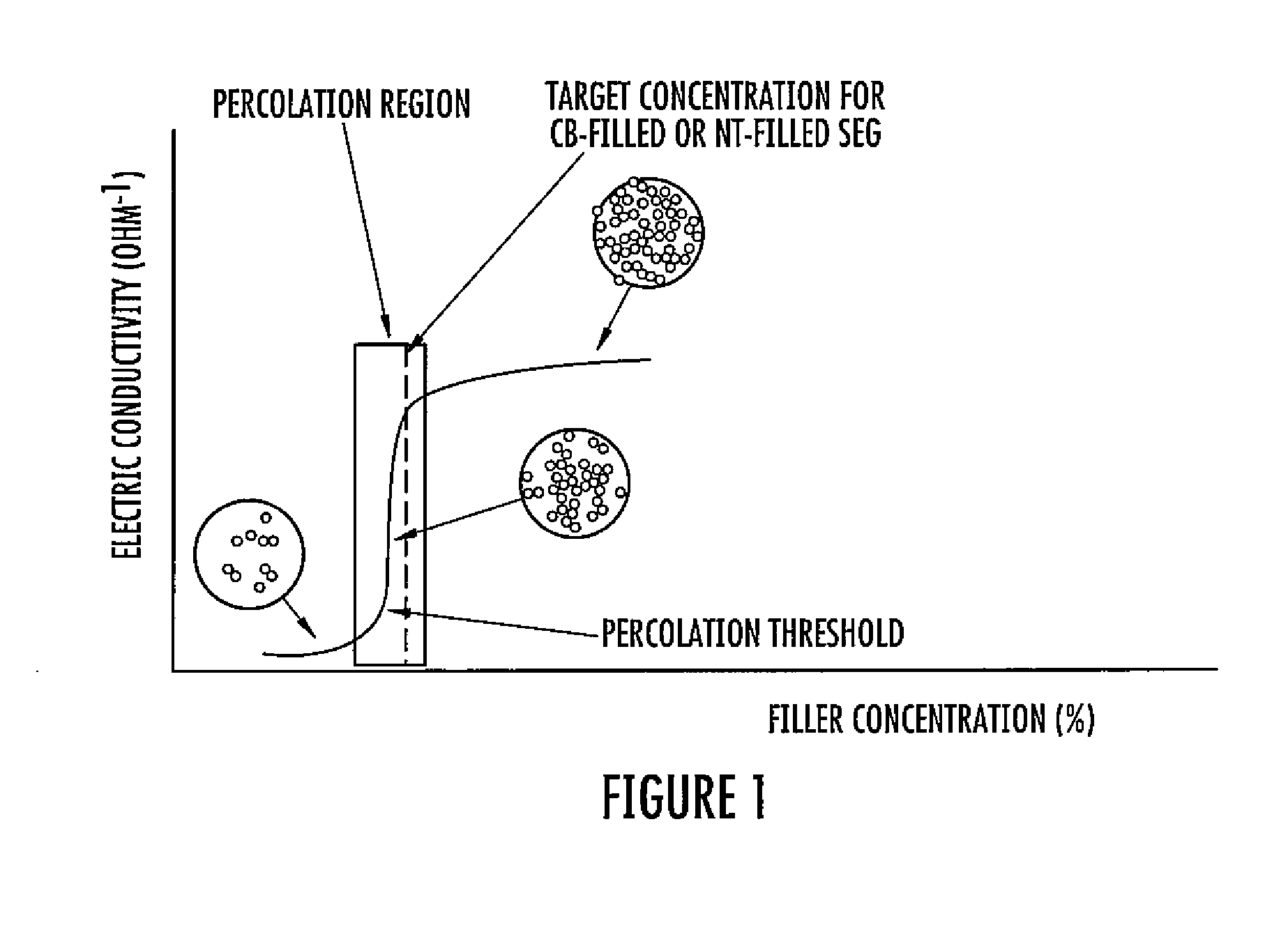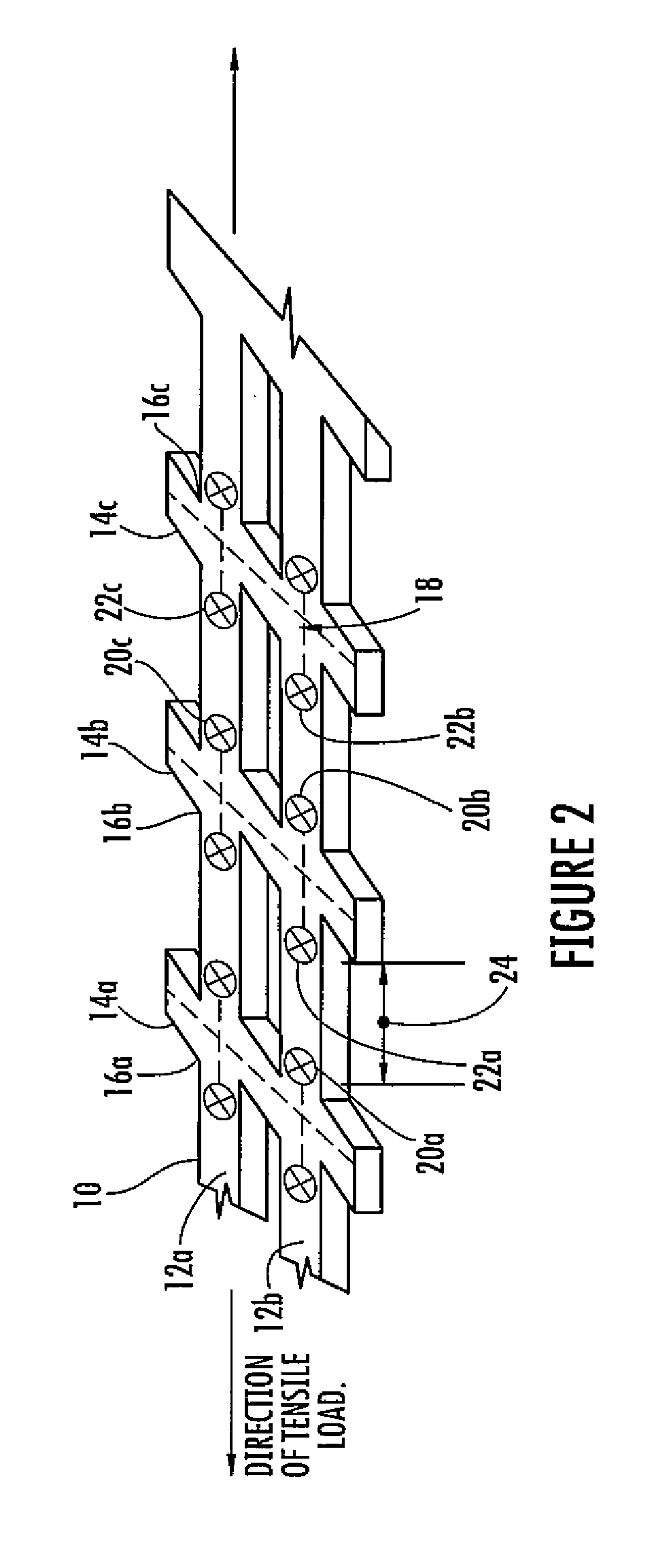Sensor-enabled geosynthetic material and method of making and using the same
a technology of sensor-enabled geosynthetic materials and geosynthetic materials, which is applied in the direction of structural/machine measurement, using mechanical means, instruments, etc., can solve the problems of imposing overly conservative design procedures and reduction factors on the strength, comparatively little attention, and costly consequences
- Summary
- Abstract
- Description
- Claims
- Application Information
AI Technical Summary
Benefits of technology
Problems solved by technology
Method used
Image
Examples
Embodiment Construction
[0057]The present invention relates to a sensor-enabled geosynthetic (SEG) material used for constructing geosyntapes and geosynthetic structures, such as geogrids, geomembranes, geotextiles, geonets, geosynthetic clay liners, geofoam, and geocomposites, which are used in reinforcement and containment applications. These geosynthetic structures have a wide range of applications and are currently used in many civil, geotechnical, transportation, geoenvironmental, hydraulic, and private development applications including roads, airfields, railroads, embankments, retaining structures, reservoirs, canals, dams, erosion control, sediment control, landfill liners, landfill covers, mining, aquaculture and agriculture. Geosyntapes are thin tapes (or strips of film or material) made from the sensor-enabled geosynthetic material for attachment to any structure to measure mechanical strains imparted on that structure. More specifically, the geosyntapes are used to measure the mechanical strain...
PUM
| Property | Measurement | Unit |
|---|---|---|
| compressive stress | aaaaa | aaaaa |
| aperture size | aaaaa | aaaaa |
| aperture size | aaaaa | aaaaa |
Abstract
Description
Claims
Application Information
 Login to View More
Login to View More - R&D
- Intellectual Property
- Life Sciences
- Materials
- Tech Scout
- Unparalleled Data Quality
- Higher Quality Content
- 60% Fewer Hallucinations
Browse by: Latest US Patents, China's latest patents, Technical Efficacy Thesaurus, Application Domain, Technology Topic, Popular Technical Reports.
© 2025 PatSnap. All rights reserved.Legal|Privacy policy|Modern Slavery Act Transparency Statement|Sitemap|About US| Contact US: help@patsnap.com



